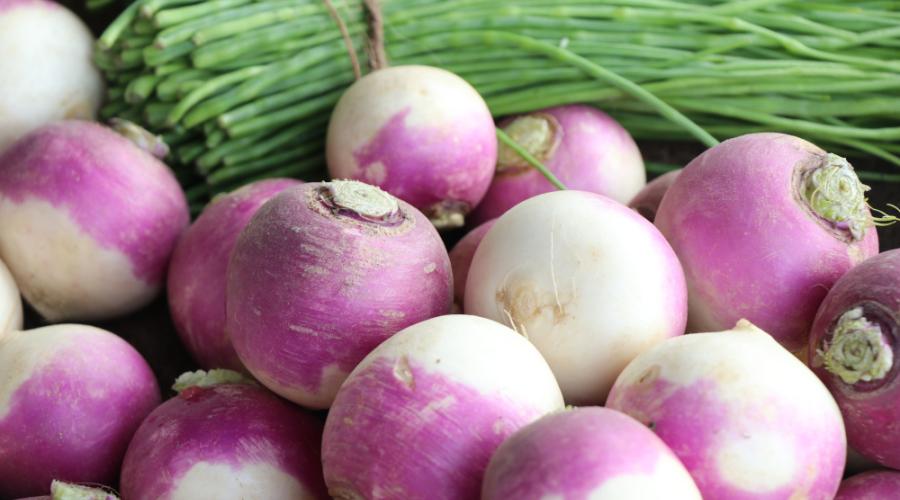
The turnip is one of the oldest vegetables in the world. As a root vegetable, turnips are hardy, inexpensive, and available throughout the winter season. Since turnip bulbs and greens can be eaten, this winter vegetable is a versatile, no-waste solution that offers many valuable health benefits. Read on to learn more about turnips and some of our favorite ways to prepare this colorful root vegetable so you can incorporate it into your healthy, balanced diet.
Health Benefits of Turnips
Source Of Potassium
One medium turnip contains about 233mg of potassium, an important nutrient linked to many health benefits. 1 Getting the recommended amount of potassium is important because it’s essential for maintaining healthy blood pressure, regulating muscle contractions, and supporting many other processes. 2 Given that about less than 2% of American adults consume the recommended daily amount of potassium, adding turnips and other potassium-rich foods to your diet could help you experience the benefits of this nutrient. 3
Supports Your Immune System
Turnip roots and leaves contain several nutrients and plant compounds that may boost your immune system. Turnips contain Vitamin C, which can help protect your body from free radicals, reduce the severity of allergic reaction, and support your immune system. 4
May Have Anticancer Properties
The plant compounds in turnips act as antioxidants, which can help reduce the negative effects of oxidative stress. 5, 6 Although more research is needed, glucosinolates, one of the compounds in turnips, have been shown to have anti-cancer effects. 7, 8, 9, 10Additionally, turnips contain anthocyanins, another type of antioxidant that has been linked to lower rates of degenerative and chronic diseases.
Recipes With Turnips
As a root vegetable, turnips can be used any way you would use a potato, and then some! Try a low-carb twist on an old favorite by whipping up mashed turnips instead of potatoes, or slice and bake them as french fries. Turnips can also be eaten raw and make wonderful additions to any salad or slaw. Since turnip leaves are edible, you can use every part of the plant. Try cooking up turnip leaves as an alternative to cooked spinach or collard greens.
The next time you’re at the grocery store, pick up a few turnips and try out a new recipe - you may just find a new favorite dish!
References
- 1 https://www.webmd.com/diet/benefits-turnips#2
- 2 https://www.healthline.com/nutrition/what-does-potassium-do
- 3 https://pubmed.ncbi.nlm.nih.gov/22854410/
- 4 https://www.ncbi.nlm.nih.gov/pmc/articles/PMC3783921/
- 5 https://pubmed.ncbi.nlm.nih.gov/30561035/
- 6 https://pubmed.ncbi.nlm.nih.gov/19683241/
- 7 https://pubmed.ncbi.nlm.nih.gov/19035553/
- 8 https://pubmed.ncbi.nlm.nih.gov/29936713/
- 9 https://pubmed.ncbi.nlm.nih.gov/28117016/
- 10 https://pubmed.ncbi.nlm.nih.gov/30445746/












